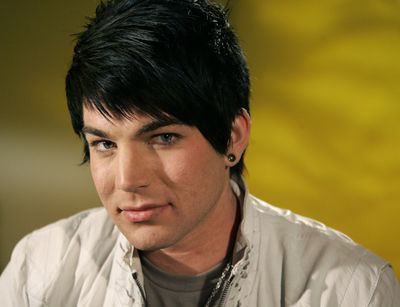Lambert comes out swinging

The days of “don’t ask, don’t tell” are over for Adam Lambert.
Rolling Stone magazine has posted a preview of its cover story in which the “American Idol” runner-up unabashedly confirms his homosexuality.
And the online excerpts online indicate that, from this day forward, he expects the media and his fans to accept him for who he is, with neither scandalized whispers nor rainbow flag-waving rallies of support.
By making his calm, cool and collected stand in this particular magazine, Lambert indicates where he’s going next as an artist and a celebrity.
Striking a hot pose in a space more accustomed to the likes of the Red Hot Chili Peppers and Kid Rock, he claims a spot for himself as an openly gay man within mainstream rock ’n’ roll, which has always tempered gender-bending with heterosexual machismo.
Traditionally, rock deities don’t commit to gender or type; their job is to open up a fantasy space in which any fan can imagine herself as both the object of desire and the star generating all that heat.
Yet rock emerged before gay liberation, and though its fantasies might be pan-sexual, its stated realities are usually straight. Mick Jagger, Janis Joplin, David Bowie, Prince, Kurt Cobain: Each of these legendary names cultivated an aura of openness and fluidity that mirrors the sensual effect of their music.
Lambert wants to join this group; now that he’s signed his contract with the “Idol”-attached 19 management and RCA Records, he can start to focus on the goal.
Though it’s definitely a media event, Lambert’s interview with ace Rolling Stone reporter Vanessa Grigoriadis also seems like something to be gotten out of the way.
Recently photographed holding hands with the fabulously named Errol Flynn look-alike Drake LaBry, Lambert has apparently returned to the West Hollywood-based life he lived before he became an “Idol,” just with many more paparazzi in tow.
Yet because Lambert has emerged as a star in a charged political moment – right in the middle of the nationwide struggle over same-sex marriage – the way he describes his own relationships has a powerful ripple effect.
Furthermore, as a public figure in a field whose relationship with the closet is long and fraught, Lambert has to face the fact that his every move will be held up to scrutiny.
That’s why his choice of Rolling Stone as a venue for discussing his sexuality is particularly interesting. As a self-styled retro-nuevo rocker, Lambert probably just thought that that cover was a cool get. But it’s also one that profoundly connects to pop’s complicated sexual history.
In 1976, Elton John gave a famous interview in the magazine, in which he declared himself bisexual. Before that interview, John was a pop idol – as Lambert is today. He was both a rock star and one of the most popular cover boys for the teen publication 16 Magazine.
Danny Fields, then an editor at 16, has often noted that John’s popularity plummeted after the piece was published. First, the teen publication received a wave of letters from young women, saying, “My brother read in Rolling Stone that Elton John is bisexual. Please say it isn’t so.”
Then, after the magazine published a commentary saying that, indeed, it was so and that fans should still support John, the letters stopped. According to Fields, John went from being “the No. 1 mail getter to none.”
Much has changed since then. John and his husband, David Furnish, are a high-society couple; just this week, John was serenaded by the openly gay Hollywood heartthrob Neil Patrick Harris after winning top honors at the Tony Awards.
Yet mainstream rock remains a mostly heterosexual preserve. Young male artists, especially, often uphold the old androgynous-but-really-into-chicks stereotype.
Think of the top younger mainstream rock acts of 2009: Nickelback, Hinder and Buckcherry all re-enact the stripper-loving antics of hair metal, while “alternative” favorites Kings of Leon specialize in rootsy swagger that’s more cowboyish than glam.
When that band recently appeared on the cover of Rolling Stone, its members were described as “God-fearing” and “booze-swilling.” That’s as masculine as rock ’n’ roll gets.
Rolling Stone’s own history reflects the rock scene’s often muddled relationship with sexual liberation. It’s into this arena that Adam Lambert steps.
By clearing up a few things, he’s making progress, not just for himself.